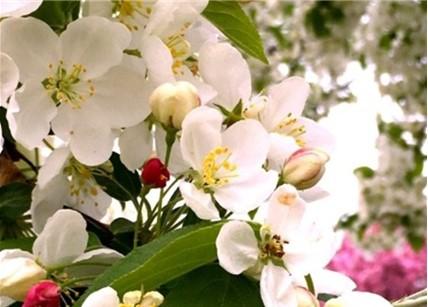Using Plant Growth Regulators to Improve Apple Return Bloom
Return bloom is a crucial factor in maintaining crop yields in apple trees year-to-year, especially in strong biennial bearing cultivars. In apples, the fate of the flower buds for the following season is determined between 4-8 weeks after full bloom. Therefore, production of high loads of fruit or vegetative tissue during this period can deplete the tree’s energy which can compromise return bloom for next year. Certain cultivars have higher tendencies for biennial bearing such as Fuji, Honeycrisp, and Red Delicious, and they initiate flower formation much earlier in the season than the annual cropping cultivar such as Gala, Macintosh, and Rome.
Plant growth regulators (PGRs) can be used to control the number of flowers formed in the following year which can maximize return bloom by minimizing competition between flowers on the same tree. PGRs are synthetic or naturally occurring chemicals that either mimic or are plant hormones used to achieve results such as increasing return bloom, thinning fruit, or altering fruit maturity.
Some commonly used PGRs in apples include Naphthaleneacetic acid (NAA), and Ethrel (Ethephon). NAA is a synthetic plan hormone in the auxin family. It is recommended to be sprayed 3- 4 times every 7-10 days starting at fruit size 30-35 mm in diameter. Rates of two oz per acre have been reported as effective for NAA. Ethephon, or Ethrel is a synthetic chemical that causes the release of ethylene. It is recommended to be used in a multi-spray program as described for NAA, but rates of eight oz per acre are adequate. Ethephon is mainly recommended for cultivars that could be sensitive to NAA, such as Red Delicious and Fuji, and it has been reported that it causes pygmy fruits in these cultivars. Ethephon should not be applied when temperatures are above 80 °F.
It is important to avoid using these PGRs either too early or too late in the season. Return bloom sprays applied too early can induce undesired additional thinning of the current season’s crop. Return bloom sprays applied too late can induce early ripening, as the fruit could already have become sensitive to the PGRs ripening effects. Return bloom sprays later in July, particularly Ethephon, can promote premature ripening and accelerate preharvest fruit drop. This is a greater concern for early ripening varieties such as Honeycrisp and McIntosh types.
It is important to remember that although these PGRs can be useful management tools and successful in promoting return bloom and help mitigate biennial bearing, their use will not be effective or it can be inconsistent in trees with excessively heavy crops, weak or unpruned trees (heavily shaded trees) or excessively vigorous trees. Furthermore, environmental factors such as water stress and heat stress can also cause inconsistent responses of PGRs.
This article appears in the April 2022, Volume 13, Issue 1 of the Vegetable and Fruit News
